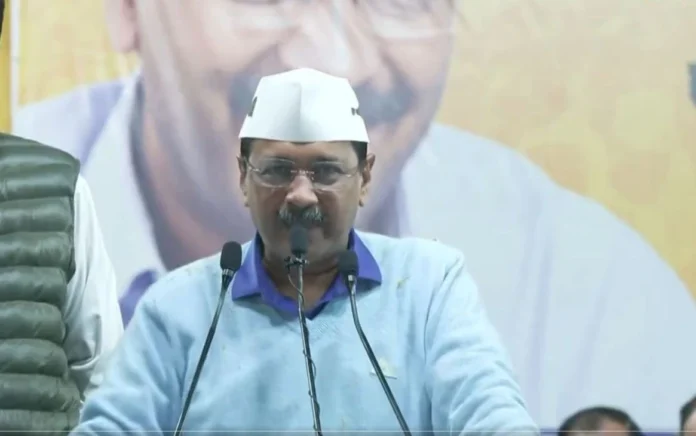By Binny Yadav
The Aam Aadmi Party (AAP), the Bharatiya Janata Party (BJP), and the Indian National Congress are locked in a fierce battle over who can promise the most attractive welfare benefits. Their strategies are particularly focused on key voter groups: women, students, and senior citizens. Each party aims to secure loyalty by addressing the financial burdens of these demographics, but critics argue that such aggressive sops could destabilize state finances in the long run.
“Election Freebies Amount To Bribery”: A Legal Perspective
The legal battle over freebies gained traction in 2024 when advocate Ashwini Upadhyay filed a petition in the Supreme Court, arguing that irrational election promises amounted to bribery and voter manipulation. However, the Court ruled that such pledges do not violate Article 14 of the Constitution and are in line with the Directive Principles of State Policy.
In its ruling, the Court referenced S Subramanian Balaji vs State of Tamil Nadu, reaffirming that the Election Commission has no authority over manifestos released before the Model Code of Conduct (MCC) kicks in. However, in Delhi’s case, all parties released their manifestos after the election date was announced, making them potentially subject to MCC regulations. Yet, the ECI has so far refrained from taking any action.
The Thin Line Between Welfare And Populism
India’s Constitution envisions a welfare state, where governments work to uplift the socio-economic well-being of citizens. This principle is embedded in:
Fundamental Rights: Guaranteeing civil liberties, equality, and justice.
Directive Principles of State Policy: Outlining the state’s role in reducing inequalities and ensuring basic living standards.
A true welfare state provides long-term support through structured social programmes. However, election-time freebies—such as cash handouts, subsidized goods, and free utilities—often blur the line between necessary social support and populist vote-seeking. While these promises bring immediate relief, they can also create long-term financial burdens, potentially reducing funds for infrastructure, healthcare, and education.
The Fiscal Cost Of Freebies
The Reserve Bank of India (RBI), in its 2024 report, warned that populist schemes like free electricity, transport, and financial doles are hurting state economies. The report stated:
“Several states have announced sops, including farm loan waivers, free electricity, free transport, allowances to unemployed youth, and monetary assistance to women in their Budget for 2024-25. These measures, if not backed by strong revenue generation, pose long-term fiscal risks.”
Critics argue that while welfare measures help marginalized communities, unchecked freebies can lead to excessive state borrowing and unsustainable deficits.
What Are The Parties Promising?
AAP’s Welfare Model
Under Arvind Kejriwal’s leadership, AAP has centred its campaign on social welfare:
• Free Electricity: Up to 200 units free per household, with a 50 percent subsidy on additional consumption.
• Mukhyamantri Mahila Samman Yojana: Rs 1,000 per month to women from households earning under Rs 3 lakh annually (Rs 2,100 if re-elected).
• Sanjeevani Yojana: Free healthcare for all senior citizens, covering both government and private hospitals.
AAP argues that these measures provide much-needed relief to lower-income groups.
BJP’s counter strategy
The BJP, aiming to reclaim Delhi after decades, has rolled out its own welfare-focused manifesto:
• Financial Support for Women: Rs 2,500 per month to poor women, and a one-time Rs 21,000 grant for pregnant women.
• Subsidized LPG Cylinders: Rs 500 per cylinder for economically weaker women, plus a free cylinder on Holi and Diwali.
• Pension Scheme: Rs 2,500 per month for senior citizens.
• Education Aid: Free schooling up to the postgraduate level, plus financial help for entrance exams.
The BJP’s strategy focuses on direct cash benefits and affordability of essential services.
Congress’s Welfare Proposals
Congress has also joined the race, focusing on healthcare and financial aid for women:
• Universal Health Insurance: Coverage up to Rs 25 lakh for all Delhi residents, modelled after Rajasthan’s Right to Health Act.
• Pyari Didi Yojana: Rs 2,500 per month to women, inspired by Karnataka’s Gruha Jyoti scheme.
The Congress claims these policies offer sustainable, structured support rather than mere populist handouts.
Election Freebies: A Governance Dilemmaa
The growing reliance on pre-election giveaways underscores a larger question in Indian democracy: Should governance be about sustainable policies or short-term incentives?
While parties argue that welfare measures uplift the poor, economists warn that excessive spending on freebies could lead to financial distress for states. The 2025 Delhi election exemplifies this ongoing tension—between social security and fiscal prudence, between governance and electoral populism.
As voters head to the polls, the challenge remains: Will they prioritize immediate relief or long-term financial stability?
—The writer is a New Delhi-based journalist, lawyer, and trained mediator


